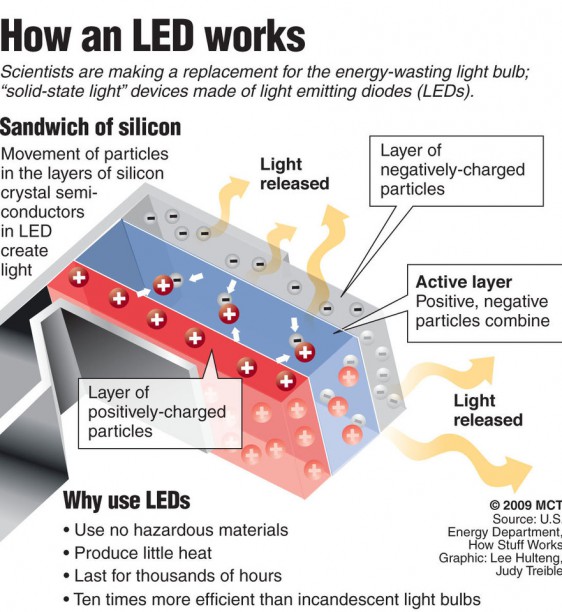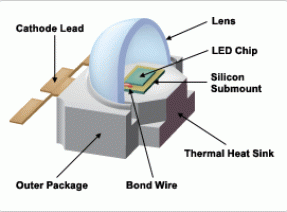Learning LEDs
Lighting - by Jessica Carey - updated on 2/1/2013
LED light bulbs have been swirling around the media a lot lately. Recent technology has allowed them to become more practical for use in your home. That's great news, considering the first stage of the EISA incandescent phase-out has already gone into effect. But what do you really know about LEDs? Most of the speculation surrounding an LED's validity and cost-effectiveness is either incorrect or outdated. At Batteries Plus, we want you to truly understand LEDs and what they can do for you.
What is an LED?
LED stands for light-emitting diode. Basically, instead of emitting light from a heated filament (as in an incandescent bulb) or a gas (as in a CFL), an SSL (solid-state light) emits light from a piece of solid matter. LED light bulbs can be used in all sorts of places to provide white and colored light, such as flashlights, common light fixtures, integrated light fixtures and more.
How does it work?
Stated very simply, an LED produces light when electrons move around within its semiconductor structure.
A "semiconductor" is a component made of positively and negatively charged particles. The positive layer has small openings and the negative layer has free electrons floating around in it. When an electric charge strikes the semiconductor, the electrons move from the negative to the positive layer, emitting light as they go.

Basic Parts
LED lighting starts with a tiny chip comprised of layers of semi-conducting material. The chip, or multiple chips, is mounted on heat-conducting material (heat sink) and usually enclosed in a lens. This allows it to have lighting controls such as dimming, light sensing and pre-set timing. The whole system is then encased in a lighting fixture, architectural structure, or even a light bulb package.

Benefits
LEDs offer a bright outlook for the future of lighting. LED light bulbs consume less than a quarter of the electricity of compact fluorescent lighting (CFL light bulbs) while lasting almost 10 times as long. They will not burn out like typical bulbs, but will gradually decrease in light output. They also do not produce heat like an incandescent bulb.
They work well in single-direction light applications such as in flashlights, recessed spot lighting and night lights as well as in omnidirectional applications, such as a table lamp. LEDs do not contain mercury and will remain cool to the touch and can be produced in a full spectrum of colors. The U.S. Department of Energy opens in new window estimates that rapid adoption of LED lighting in the U.S. by 2027 could:
- Deliver savings of about $265 billion.
- Avoid 40 new power plants.
- Reduce lighting electricity demand by 33% in 2027.
Recycling Options
If you want to dispose of your old, broken lights, did you know that you can recycle them? Just like other recyclables, light bulbs can be broken down and made into new materials. Batteries Plus is a leader in the recycling of spent light bulbs. Visit our recycling page for more information.Find a variety of energy-efficient light bulbs, fixtures and accessories on our light bulb page. For more information on LED lighting, visit our LED Light Bulb Topic Page.
And remember, we're social, so follow us!

